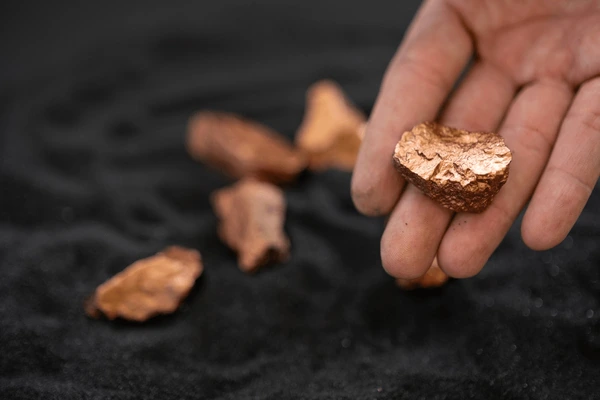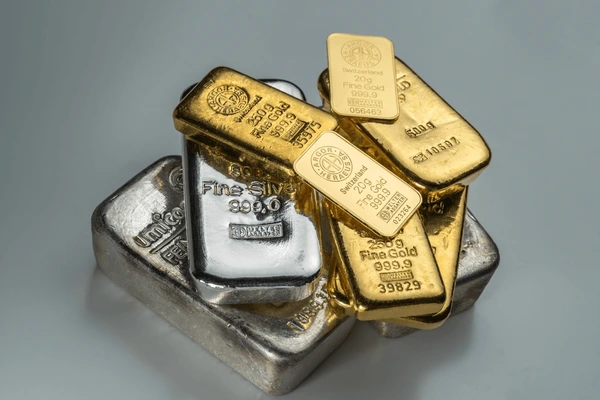Sayanava Sinha Roy
09.06.2025
How to refine silver safely using DIY artisanal methods
How to refine silver using safe DIY artisanal methods at home with expert-backed insights. Trusted by hobbyists and a reputed silver buyer.
Empowering Silver Enthusiasts through Safe Home Practices
Refining silver may sound like a process best left to high-tech labs or industrial units. But for artisans, hobbyists, or small-scale collectors, the ability to safely and effectively purify silver at home offers freedom, savings, and a sense of mastery.
If you’re wondering how to refine silver without harming your surroundings or compromising on safety, this guide walks you through the essentials—step-by-step, in a human, easy-to-follow manner.
Table of Contents
Whether you’re working with scrap jewelry, silver coins, or old utensils, it’s possible to achieve a clean, polished result using mindful, artisanal techniques backed by years of chemical and metallurgical experience.

Why Artisanal Silver Refining Is Gaining Popularity
In recent years, a growing number of individuals have turned toward eco-conscious, small-batch metal purification. Why?
- Mass refining often uses aggressive chemicals with high environmental impact.
- DIY techniques offer better control over input, output, and purity.
- For silver buyers, understanding refining boosts negotiation and appraisal confidence.
Professionals often recommend knowledge of the basics, even if you don’t refine silver yourself. It helps you verify quality, judge purity, and engage more confidently in silver trading.
Materials You’ll Need to Begin the Refining Process
Before diving into the process, gather all safety materials and tools required for a basic artisanal silver purification setup.
- Protective Gear: Gloves, goggles, apron, and a well-ventilated workspace
- Silver Scrap: Old jewelry, coins, or utensils
- Nitric Acid (HNO₃): For separating silver from base metals
- Distilled Water: For washing and diluting
- Glass Containers (Beaker or Pyrex bowl): For chemical reactions
- Copper wire or bars: For precipitating silver
- Filter paper & funnel: For collecting refined silver
- Baking soda or sodium carbonate: For neutralizing acid waste
Understanding the Chemical Basis: A Quick Science Note
When nitric acid reacts with silver-containing materials, it dissolves the silver to form silver nitrate (AgNO₃). Base metals like copper or zinc will also react, separating the silver chemically.
Later, clean copper is added to the silver nitrate solution, which causes pure silver to precipitate out in powdery form. This silver can then be washed, dried, and melted into a usable shape.

How to Refine Silver: A Step-by-Step Artisanal Method
Step 1: Safety First
Always work in an open space or under a chemical fume hood. Wear gloves, eye protection, and an apron. Avoid inhaling fumes or touching bare skin with chemicals.
Step 2: Dissolving the Silver
- Place silver scrap into a heat-resistant glass container.
- Add nitric acid (1 part acid to 3 parts water) slowly. The solution will bubble and fume—this is normal.
- Wait until the bubbling stops. The solution will turn blue as the silver dissolves.
Step 3: Filtering the Silver Nitrate
- After complete reaction, filter the solution using paper and funnel.
- Discard or store the solid residues separately.
Step 4: Precipitating Pure Silver
- Place clean copper strips in the blue solution.
- Over hours or days, silver crystals will form on the copper.
- Wait until all silver precipitates—solution becomes pale green.
Step 5: Collection & Washing
- Filter out the silver crystals.
- Rinse multiple times with distilled water to remove acid residues.
Step 6: Drying & Melting
- Let the silver dry completely.
- It can now be melted using a torch or crucible, shaped into ingots or stored for resale.
Safety Reminders and Eco-Conscious Tips
- Neutralize leftover acid with baking soda before disposal.
- Never pour waste into drains—contact local hazardous waste management.
- Always label your solutions to avoid accidents.
Many enthusiasts have refined this technique further, minimizing chemical use and adopting natural filters like activated charcoal.
The Hidden Benefits of DIY Silver Refining
Knowledge Is Power:
Knowing how to refine silver lets you evaluate the quality of metal more accurately—especially when trading or reselling.
Cost-Effective:
Refining at home cuts third-party service fees, helping you retain more value.
Empowering Hobbyists:
For artisans making jewelry or decorative items, controlling the purity of silver enhances craftsmanship and product value.
Alignment with Sustainability:
Small-batch refining allows responsible chemical disposal, which contributes to more eco-friendly metal processing.
Mastering How to Refine Silver Safely: Avoid Common Mistakes
Even the most enthusiastic learners can make errors that ruin the outcome or risk their safety. Avoid these pitfalls:
- Using impure nitric acid—this can lead to incomplete reactions
- Skipping filtration—leaves unwanted metals in final silver
- Rushing the precipitation—results in poor crystal quality
- Not rinsing enough—residual acids can cause corrosion later
Experience Matters: Trust, Learn, Improve
Behind these DIY methods lies a deeper philosophy: metal has memory, and how you treat it during refining reflects in its final strength and luster. Learning through small batches helps build trust in your results—and soon enough, others may come to you for guidance.
Trusted refiners have often emphasized the value of education when it comes to precious metal handling. Knowing the science, steps, and standards puts you ahead in negotiations and product validation.

Frequently Asked Questions (FAQs)
Q1. Is it legal to refine silver at home?
Yes, in most regions, small-scale refining for personal use is legal. However, check local environmental disposal and safety laws.
Q2. Can I use other acids apart from nitric acid?
Nitric acid is the most effective for silver. Alternatives like hydrochloric acid are not effective for dissolving silver.
Q3. Is it safe to melt silver at home?
Yes, if you have a proper crucible and safety gear. Use ventilation and never melt indoors without precautions.
Q4. What’s the purity level I can expect with DIY refining?
Artisanal refining can achieve up to 98-99% purity if done carefully, though industrial refining may still reach higher precision.
Q5. Can I refine silver-plated items?
It’s possible but often not cost-effective. Plated items have minimal silver content and involve more effort for less yield.
A Skill Worth Refining
Refining silver at home may seem daunting at first, but it is, in essence, a blend of chemistry, patience, and responsibility. With the right steps and mindset, even beginners can learn how to refine silver safely and effectively.
Whether you’re an artisan, a seller, or simply a curious learner, the journey from scrap to shine brings not only metal transformation—but also personal growth.
And when you’re ready to validate or trade what you’ve refined, seek professionals who understand the value of careful craftsmanship—those known for their trust and legacy in silver.
Popular Post



